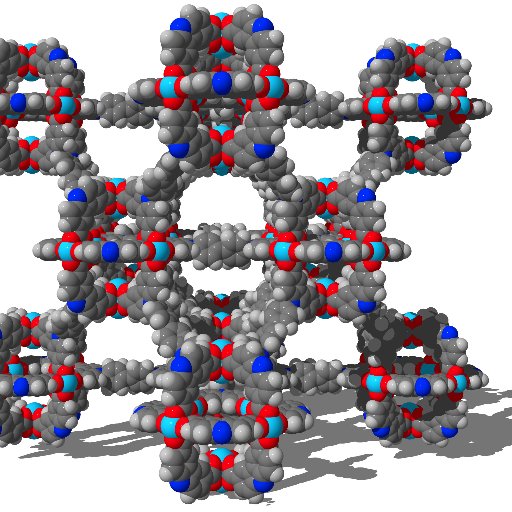
Milner Group at Cornell University
@RunOfThePhill
Followers
3K
Following
2K
Media
223
Statuses
946
Chemistry research group at Cornell University, working on organic, inorganic, and materials chemistry. Catalysis and separations.
Ithaca, NY
Joined August 2018
first paper of grad school finally out!!
Check out our newest MOFganic story on photocatalytic C-H functionalization with a Cu-Cl MOF, now out on ChemRXiv! https://t.co/9WNSdzyndi
0
5
75
Check out our newest MOFganic story on photocatalytic C-H functionalization with a Cu-Cl MOF, now out on ChemRXiv! https://t.co/9WNSdzyndi
0
8
85
BREAKING NEWS The Royal Swedish Academy of Sciences has decided to award the 2025 #NobelPrize in Chemistry to Susumu Kitagawa, Richard Robson and Omar M. Yaghi “for the development of metal–organic frameworks.”
499
9K
19K
Check out undergrad Zayim's paper on aqueous MOF synthesis, now out in JMCA! He was even able to find a new open metal site MOF that does not form under traditional solvothermal conditions. Congrats to PhD coauthors Ron, Tristan, and Clarisse! https://t.co/mEWHPhH7ZE
0
1
14
High-Concentration Aqueous Synthesis of Salicylate-Based Metal-Organic Frameworks
0
1
2
Deeply honored to be part of the 2025 @schmidtsciences Polymath cohort! 🥳
Congratulations to Nozomi Ando, @CornellChem professor! She's been named a @schmidtsciences Polymath, part of a global cohort of 8 scientists & engineers with “remarkable track records, promising futures and a desire to expand their research portfolios." https://t.co/553zqT1FZx
0
2
17
Nozomi Ando, professor of @CornellChem in @CornellCAS, has been named a Schmidt Polymath, part of a global cohort of eight scientists and engineers who will each receive up to $2.5M over five years to conduct early-stage, novel research. @schmidtsciences
news.cornell.edu
Nozomi Ando, professor of chemistry and chemical biology in the College of Arts and Sciences, has been named a Schmidt Polymath, part of a global cohort of eight scientists and engineers who will...
0
6
16
Congratulations to @CornellChem professor Song Lin! He is a finalist for the 2025 @BlavatnikAwards for Young Scientists, an honor announced today by the Blavatnik Family Foundation and @NYASciences. @songlin_chem
https://t.co/6TVwqZkaDd
1
5
42
Instead of our traditional champagne toast, today we had a bubble tea toast to celebrate the submission of post-doc Jiachen’s paper!
0
0
8
Congrats to Dr. Sijing (Zoe) Meng, PhD #9 from our group, who successfully defended yesterday!
0
0
3
Team MOFganic strikes again! Check out our most recent work, now out in @J_A_C_S! Kaitlyn, Julia, and Jaehwan showed that vinyl fluoride gases are surprising electrophilic and react selectively with N-heterocycles! https://t.co/SfZSBPThop
0
7
86
Congrats to all of the winners especially Jonas and Song from @SongLinLab and Geoff from @TheCoatesCrew!
0
0
1
We are very excited to announce that PJM has been named a recipient of the ACS Award in Pure Chemistry! 🥳🍾🍻🎉 https://t.co/ZgtzBTVbqL
cen.acs.org
The winners are being acknowledged for their outstanding achievements in chemistry across various fields in the discipline
1
1
30
Rising fifth year Bayu from our lab is having a banner day! He rocked his talk at WNIYS (at the University of Rochester) and his review on the use of light to capture [redacted gas] just came out in Trends in Chemistry! Check it out here: https://t.co/iILst1O3uW
0
1
11
Researchers @CornellChem have designed a light-powered, reusable catalyst capable of driving challenging reactions, with applications including drug development and environmental clean-up. @ENERGY @CornellCAS @NatureChemistry @RunOfThePhill
news.cornell.edu
Cornell chemistry researchers have designed a light-powered, reusable catalyst that’s pre-charged by electricity and capable of driving challenging reactions, with applications including drug...
0
4
6
This work was inspired by beautiful molecular work and discussions (and grant submissions!) with our colleagues @TheLambertLab and @SongLinLab as well as @WickensGroup, Nocera, Konig, @MiyakeLabGroup, @NicewiczLab, and many others, on how to make deeply reducing photocatalysts.
0
0
0
2) Catalysis proceeds through static quenching, rather than dynamic quenching typical of photoredox catalysis. In other words, the substrate binds to the reduced catalyst before photoexcitation, allowing for electron transfer from a relatively short-lived photoexcited species.
1
0
0
1) How you connect the catalytically active units together is as important as which catalytic motifs you employ. We originally thought porous crystalline materials would be the best, but an amorphous, non-porous, and flexible polymer was the champion!
1
0
0
We synthesized a library of redox-active polymer catalysts (do we qualify as polymer chemists now? @forsgroup @TheCoatesCrew) for the challenging reduction of haloarenes , which led to two surprising discoveries.
1
0
0









